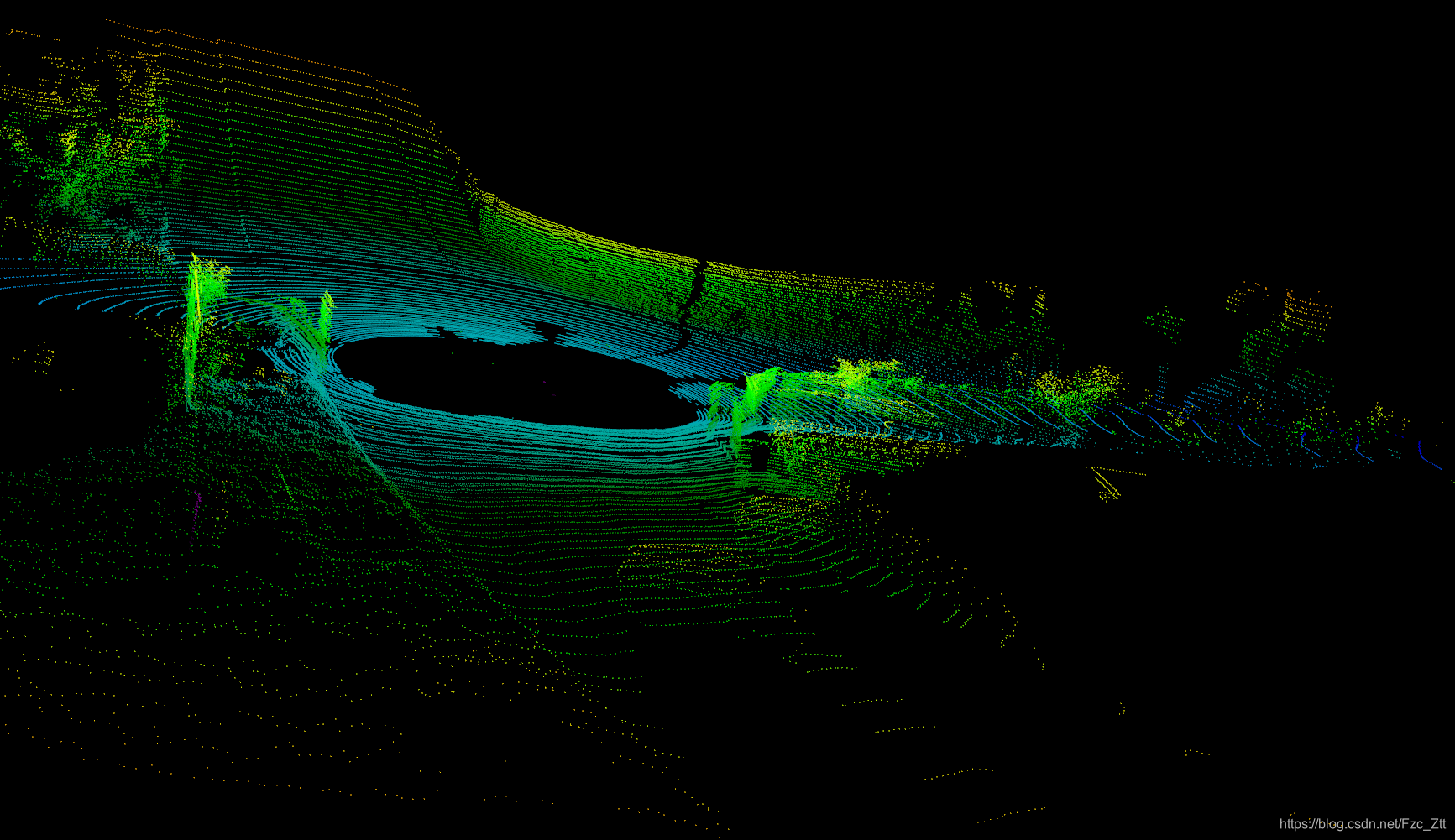一.Linux环境下
- 安装pcl-tools库
sudo apt-get install pcl-tools
- 运行pcd文档:
pcl_viewer xxx.pcd
注意:xxx换成对应的pcd文件名
二.win10(linux环境应该也可以),可视化.bin文件
注意 .bin文件时lidar(激光雷达数据常用格式),上边的.pcd是radar(雷达,应该是超声波雷达,常用数据格式)
方法一:python中使用numpy读取文件,使用mayavi.mlab包可视化(未安装相应包的先安装包),可视化效果较好,而且可视化界面有一些角度快捷按钮
import numpy as np
import mayavi.mlab
# lidar_path换成自己的.bin文件路径
pointcloud2 = np.fromfile(str("H:\\数据集\\KITTI_CSDN\\data_odometry_velodyne\\dataset\\sequences\\11\\velodyne\\000001.bin"), dtype=np.float32, count=-1).reshape([-1, 4])
x = pointcloud2[:, 0] # x position of point
y = pointcloud2[:, 1] # y position of point
z = pointcloud2[:, 2] # z position of point
r = pointcloud2[:, 3] # reflectance value of point
d = np.sqrt(x ** 2 + y ** 2) # Map Distance from sensor
degr = np.degrees(np.arctan(z / d))
vals = 'height'
if vals == "height":
col = z
else:
col = d
fig = mayavi.mlab.figure(bgcolor=(0,0,0),size=(640, 500))
mayavi.mlab.points3d(x, y, z,
col, # Values used for Color
mode="point",
colormap='spectral', # 'bone', 'copper', 'gnuplot'
# color=(0, 1, 0), # Used a fixed (r,g,b) instead
figure=fig,
)
mayavi.mlab.show()
mayavi效果图

方法二:使用numpy读取,struct包构造,open3d可视化
import os
import numpy as np
import struct
import open3d
def read_bin_velodyne(path):
pc_list=[]
with open(path,'rb') as f:
content=f.read()
pc_iter=struct.iter_unpack('ffff',content)
for idx,point in enumerate(pc_iter):
pc_list.append([point[0],point[1],point[2]])
return np.asarray(pc_list,dtype=np.float32)
def main():
root_dir='G:\\kitti_bin\\data_object_velodyne\\testing\\kitti_open3d_test'
filename=os.listdir(root_dir)
file_number=len(filename)
pcd=open3d.open3d.geometry.PointCloud()
for i in range(file_number):
path=os.path.join(root_dir, filename[i])
print(path)
example=read_bin_velodyne(path)
# From numpy to Open3D
pcd.points= open3d.open3d.utility.Vector3dVector(example)
open3d.open3d.visualization.draw_geometries([pcd])
if __name__=="__main__":
main()
可视化效果

版权声明:本文为Fzc_Ztt原创文章,遵循CC 4.0 BY-SA版权协议,转载请附上原文出处链接和本声明。